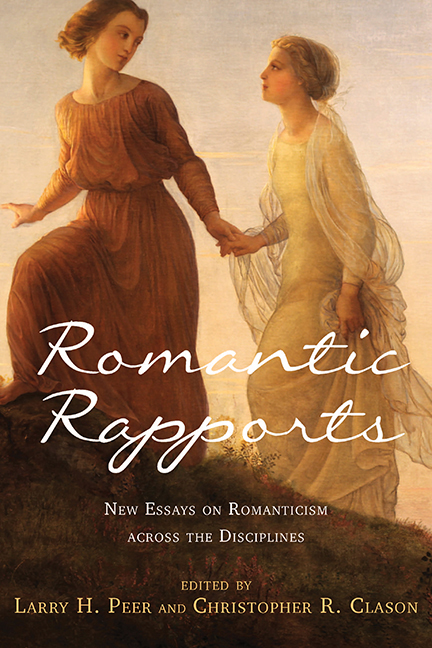Book contents
- Frontmatter
- Dedication
- Contents
- Acknowledgments
- Introduction: The Polyvalence of Romanticism
- Part I Romanticism and the Literatures
- 1 Werther and Harold: Rapport and Difference in the Literary Articulation of the Romantic Subject
- 2 Balzac and the French New Wave: A Problematic but Enticing Relationship
- 3 Romantic Relations and Constructive Affinities: Notions of Family in Kater Murr
- 4 Françoise's Way and Bloch's Way: Two Paths of French Romanticism in Proust's À la recherche
- Part II Romanticism, Music, and the Visual Arts
- Part III Romanticism and Science, Technology, Philosophy
- Notes on the Contributors
- Index
4 - Françoise's Way and Bloch's Way: Two Paths of French Romanticism in Proust's À la recherche
from Part I - Romanticism and the Literatures
Published online by Cambridge University Press: 30 August 2017
- Frontmatter
- Dedication
- Contents
- Acknowledgments
- Introduction: The Polyvalence of Romanticism
- Part I Romanticism and the Literatures
- 1 Werther and Harold: Rapport and Difference in the Literary Articulation of the Romantic Subject
- 2 Balzac and the French New Wave: A Problematic but Enticing Relationship
- 3 Romantic Relations and Constructive Affinities: Notions of Family in Kater Murr
- 4 Françoise's Way and Bloch's Way: Two Paths of French Romanticism in Proust's À la recherche
- Part II Romanticism, Music, and the Visual Arts
- Part III Romanticism and Science, Technology, Philosophy
- Notes on the Contributors
- Index
Summary
WHILE GROWING UP IN PARIS in the 1870s and early 1880s, the young Marcel Proust spent much of his time reading a variety of fictional and nonfictional texts, many by midcentury authors influenced by the French Romantic period, which was at its height from roughly 1820 to 1840. Stories such as the cloak-and-dagger escapades of Capitaine Fracasse by Théophile Gautier, the comic missteps of Tartarin de Tarascon in Alphonse Daudet's eponymous novel, and the harrowing tales of medieval France in Récits des temps mérovingiens by the Romantic historian Augustin Thierry imbued the future novelist from an early age with a Romantic sensitivity. Proust's Romanticism, which is perhaps most evident in the tumultuous affair between Swann and Odette in “Swann in Love,”1 was not limited, however, to the intensely emotional accounts of love and loss that are frequently associated with this literary movement. His readings as a youth exposed him to a wide range of motifs, including the allure of foreign settings, the search for the absolute, the mystique of the artist, a certain disdain for the mediocre and an appreciation for what might initially appear ordinary, dissatisfaction with the present, a taste for dramatic embellishment, connections between nature and the spiritual world, the appeal of history and local color, and the charm of the creative spirit of the people.
Given the makeup of Proust's library in his youth, it is not surprising that an array of Romantic principles underpin his monumental novel, In Search of Lost Time. Near the beginning of the novel, which retraces the evolution of a young boy into a mature writer, the protagonist encounters two individuals, representing divergent currents that spring from French Romanticism, who will play a fundamental role in his artistic evolution. The first of these is Françoise, the cook and housekeeper, initially for Aunt Léonie in Combray and then for the protagonist's family in Paris.
- Type
- Chapter
- Information
- Romantic RapportsNew Essays on Romanticism across the Disciplines, pp. 66 - 78Publisher: Boydell & BrewerPrint publication year: 2017



